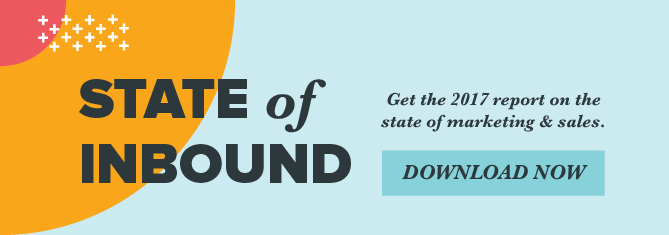
Sales priorities haven’t changed much in recent years. HubSpot’s recent State of Inbound 2017 survey reveals, most sales teams remain focused on one priority: closing more deals.
But the way they accomplish that goal has changed, HubSpot’s findings show. The annual survey of some 6,400 sales and marketing professionals from around the world sheds new light on the top sales challenges and priorities organizations are facing today.
One of the most notable findings is that the rise of inbound marketing is casting a harsh light on traditional and hard-sell sales strategies.
In this content-rich and multi-channel marketing environment, traditional sales efforts are out of sync with today’s well-informed B2B buyers. Businesses are communicating with audiences differently. And sales teams have had to adapt their approach.
Evidence for the disconnect between what buyers want and what sales can provide comes from the survey, which shows that traditional sales efforts are falling flat: Some 38% of sales respondents said getting a response from prospects has gotten tougher over the last few years.
Conversely, buyers are into inbound. Respondents said clients are more interested in using a company’s website as the primary source of marketing information, and they’d rather consult sales reps later in the game. At the same time, inbound is increasing its stronghold: Some 71% of marketers now say it’s their primary marketing strategy.
Inbound marketing also has built an esteemed reputation: 68% of inbound marketers surveyed believe their organization’s marketing strategy is effective, compared with 48% of outbound marketers. In addition, survey results show that traditional marketing tactics are losing their luster: When respondents were asked to name the most overrated marketing tactic, paid advertising led the ranks, as it was cited by 32% of them.
What’s the antidote for sales teams that ditch the hard-sell stance? HubSpot findings also show there are new strategies to employ. Namely, sales organizations need to transform salespeople into trusted advisors. They must also work to build stronger client partnerships.
Toward this end, the winning sales and marketing approach now focuses on delivering what buyers want. In many cases, that means a growing preference for technology-based content over personal service and direct communication.
“Gone are the days of the salesperson being the gatekeeper for information,” one respondent remarked. “Our website has now become our primary mode of marketing, where it used to be our brick-and-mortar locations.”
In this environment, respondents say, it’s not enough to have just a website and blog to generate leads and engage prospects. The new norm is marketing across a variety of social channels and content publishing platforms.
Top sources of information for purchasing decision-makers now include vendor-authored and media articles, in addition to word-of-mouth referrals and customer references. But sales people have moved to the bottom of the ladder.
HubSpot says savvy businesses can make the best of these altered buyer expectations by outfitting their sales staffs with helpful insights that buyers can’t readily unearth from media articles or case studies. By providing these extras, such as training, user statistics, and proprietary findings, sales teams will be able to establish rapport and build clients’ trust.
More importantly, by taking this approach, sales teams will be uniquely positioned once again to give well-qualified buyers exactly the resources they demand, at just the time they demand them.
For comprehensive buyer, sales and marketing insights from HubSpot’s State of Inbound 2017 survey, request the full report here.
